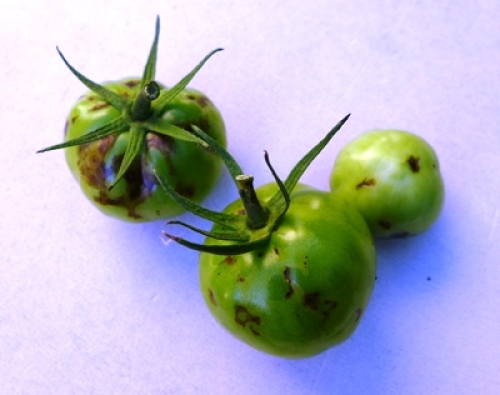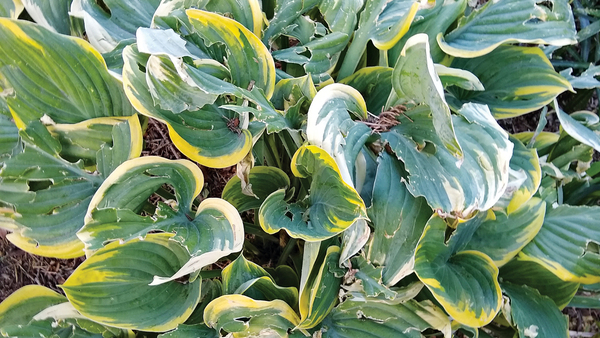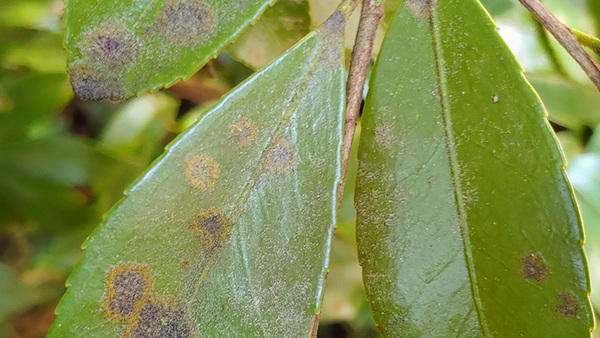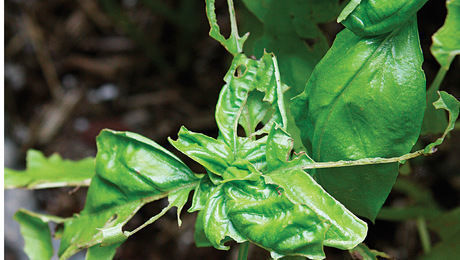
Tomatoes may seem trickier to grow than other fruits and vegetables, but they’re not if gardeners give plants what they need. Because tomatoes are a tropical plant, they like hot temperatures, rich soil, and plenty of room to grow.
Good gardening practices can prevent some tomato plant problems before they start. Keep the tomato garden weed-free, water deeply and infrequently, fertilize while plants are flowering and fruiting. If you see any issues start to crop up with leaves or fruits, get to work to solve the issue quickly.
Blossom-end rot, cracks in tomatoes and sunburned leaves are all environmental or treatable problems. Plant diseases show up in different ways and are more difficult to treat.
Lower leaves have brown circular spots before they turn yellow. This problem could be early blight. This fungal disease starts on the lower leaves and gradually moves up the plant. Remove and discard all diseased plant parts. Plants need at least 2 feet spacing to get air circulation and vines need to grow up on trellises. Water only at the ground level to keep leaves dry.
Dark watery spots on lower foliage. Another fungal disease called late blight can cause this problem, especially during wet weather. Tomatoes may also start showing brown spots. Remove and destroy diseased plants. Be sure to clean up any tomatoes and leaves to keep the blight from spreading.
Plants wilt in the middle of the day, even when watered. Two more fungal diseases, Verticillium wilt and Fusarium wilt, are soil-borne problems that affect plant health and poor fruiting. Unfortunately, there’s not much you can do for plants once they’re diseased except to pull them up and discard (not in the compost). Be sure to rake up any leaves. Next season, plant VFN and FVN resistant cultivars.
Sunken spots on tomatoes and leaves. Anthracnose is one more fungal disease that can starts as spots on leaves, and it can infect ripe tomatoes. Remove and destroy infected plants and try to save fruits by cutting out the diseased portions. Prevent future outbreaks by rotating tomato family plantings.
Leaves curl and wilt before stems crack. These are signs of bacterial canker and spots may also show up on fruits. Clip off infected leaves pull up and destroy plants if the canker is severe. To prevent, plant only healthy plants and water at soil level to keep leaves dry.
Mottling, crinkling and abnormal growth in tomato leaves. Plants can be infected by a virus that causes plant growth to be stunted and tomatoes to ripen unevenly. Viruses are typically transmitted by insect pests, like aphids and psyllids. Keep garden free of weeds and prevent future problems by selecting plants resistant to Tomato mosaic virus and Tobacco mosaic virus.
If you don’t see your tomato problem here, the Tomato MD app provides additional images and descriptions.
Fine Gardening Recommended Products

The New Organic Grower, 3rd Edition: A Master's Manual of Tools and Techniques for the Home and Market Gardener, 30th Anniversary Edition
Fine Gardening receives a commission for items purchased through links on this site, including Amazon Associates and other affiliate advertising programs.

A.M. Leonard Deluxe Soil Knife & Leather Sheath Combo
Fine Gardening receives a commission for items purchased through links on this site, including Amazon Associates and other affiliate advertising programs.

Chapin International 10509 Upside-Down Trigger Sprayer
Fine Gardening receives a commission for items purchased through links on this site, including Amazon Associates and other affiliate advertising programs.



















Comments
Log in or create an account to post a comment.
Sign up Log in